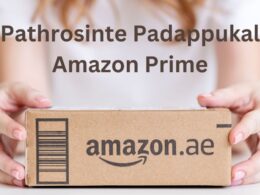Maintaining a leading position is critical in the dynamic world of search engine optimization (SEO). A game-changer in search engine optimization is m-e1. However, define m-e1 and explain its significance to your digital strategy.
1. Introduction to m-e1
M-e1, an acronym for “meta-entity optimization,” is a state-of-the-art strategy for improving a website’s exposure and position in SERPs. The focus is on making information more relevant for larger ideas or entities rather than simply specific keywords.
2. Understanding the Significance of m-e1
Definition of m-e1
Instead of concentrating on individual words or phrases like standard keyword optimization does, m-e1 digs farther into the content’s semantic context. Entity optimization is a way to provide search engines with a better grasp of your content by tailoring it to specific people, locations, objects, or ideas.
Importance in SEO
Google and other modern SEO platforms place a premium on contextual relevance. Adopting m-e1 allows website owners to better match content with user intent, which in turn improves exposure and ranks.
3. Key Features of m-e1
Accessibility
The fact that m-e1 may be used in so many different fields is one of its main selling points. Your SEO approach may effortlessly incorporate m-e1 whether you’re in charge of an e-commerce site, a blog, or a corporate website.
Versatility
Flexibility M-e1 may be used with a variety of methods. It is flexible enough to accommodate a wide range of digital marketing approaches since it incorporates several techniques, such as entity-based content modeling, structured data markup, and semantic keyword optimization.
Effectiveness
Multiple reviews and case studies from the industry confirm that m-e1 helps increase organic traffic and boost search engine results. Businesses may achieve long-term success in increasing their internet presence by optimizing content around entities instead of just keywords.
4. How to Implement m-e1 in SEO Strategies
Incorporating m-e1 into Content
Integrating m-e1 into Content First, you need to find relevant entities within your specialty. This may be done by performing extensive keyword research. Then, to make your content more optimized, organically include these elements in your headers, body text, and titles. Also, to help search engines understand your material better, use semantic markup like schema.org.
Utilizing m-e1 for Website Optimization
Meta tags, internal linking, URL structure, and content optimization are just a few other areas where m-e1 may be utilized. Search engines will give your content more weight if it is consistent and coherent throughout your whole website.
5. Benefits of Using m-e1 in SEO
Improved Search Engine Rankings
Businesses may improve their search engine ranks for desired keywords and boost organic traffic by adopting m-e1. This will strengthen their relevance and authority in the eyes of search engines.
Enhanced User Experience
Making important, user-focused content and optimizing it for M-e1 go hand in hand. Your audience-resonating entities and concepts will help you provide a more interesting and educational experience, which in turn will increase the trust and loyalty of your visitors.
6. Common Mistakes to Avoid When Using m-e1
Overusing Keywords
Overusing keywords might hurt your SEO efforts, but they are still crucial. Make sure your material is consistent and relevant to the user’s goal so it can truly help them.
Ignoring User Intent
Some companies neglect satisfying customers’ demands in their haste to climb the search engine ranks. Optimizing your content for users should always revolve around their goals, with an emphasis on providing answers and solutions that connect with them.
7. Best Practices for m-e1 Optimization
Conducting Keyword Research
Spend some time and energy doing in-depth keyword research to find relevant entities and niche-related subjects. Gain useful insights into search trends and user behavior with the help of tools like Ahrefs, Google Keyword Planner, and SEMrush.
Creating High-Quality Content
The relevancy and quality of your content are the two most important factors in m-e1 optimization. Your material should be well-researched, interesting, and instructive to attract and retain readers.
8. Conclusion
Overall, m-e1 is a game-changer for search engine optimization as it provides a more sophisticated and fruitful strategy for content optimization. Businesses may get an advantage in the increasingly competitive digital market by adopting m-e1 principles and best practices, which will open doors to new growth prospects and increased exposure.
9. FAQs
1. What is m-e1?
Instead of optimizing content for specific keywords, an advanced SEO strategy called M-e1 focuses on optimizing material around entities or concepts.
2. How does m-e1 differ from traditional keyword optimization?
In contrast to conventional keyword optimization, which focuses on individual words or phrases, m-e1 optimizes entities, giving search engines a fuller picture.
3. What are the benefits of using m-e1 in SEO?
Search engine rankings, user experience, and content alignment may all be improved when organizations use m-e1.
4. How can I implement m-e1 in my SEO strategy?
Before optimizing your content and website, you should perform keyword research to find relevant entities in your area. Then, make sure your material is relevant, coherent, and focused on user intent.
5. What are some common mistakes to avoid when using m-e1?
Stay away from keyword stuffing and putting search engine rankings ahead of human purpose. Make sure your material is high-quality and focused on the needs of your audience if you want to attract and retain them.








